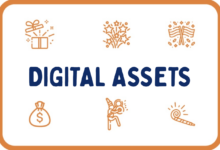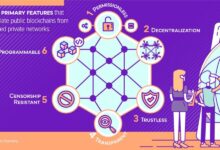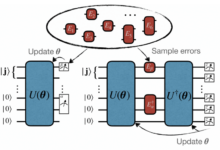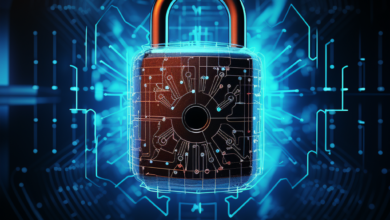5G in Healthcare Revolutionizing Medicine
5G in healthcare isn’t just about faster downloads; it’s about a fundamental shift in how we deliver and receive medical care. Imagine real-time remote surgery, instant access to high-resolution medical images across continents, and personalized medicine powered by constantly monitored patient data. This is the promise of 5G, a promise rapidly transforming the healthcare landscape.
The integration of 5G’s high bandwidth and low latency capabilities is poised to revolutionize various aspects of healthcare, from telemedicine and remote patient monitoring to medical imaging and the Internet of Medical Things (IoMT). This technology facilitates seamless data transfer, enabling faster diagnoses, improved treatment outcomes, and enhanced patient care, particularly in remote or underserved areas. However, alongside the immense potential, we must carefully consider the security and ethical implications of widespread 5G adoption in healthcare.
5G Network Infrastructure in Healthcare
The integration of 5G technology into healthcare promises to revolutionize patient care and operational efficiency. Its high speed, low latency, and increased capacity offer unprecedented opportunities for remote monitoring, telehealth consultations, and the efficient transmission of large medical datasets. Understanding the network infrastructure required to realize these benefits is crucial for successful implementation.
Essential Components of a 5G Healthcare Network
A 5G network designed for healthcare applications requires a robust and secure infrastructure consisting of several key components. These include: a core network capable of handling the high volume and velocity of data, radio access networks (RANs) with sufficient coverage and capacity, edge computing capabilities for processing data closer to the source, and advanced security protocols to safeguard sensitive patient information.
Furthermore, the network must be designed for scalability and flexibility to accommodate the evolving needs of healthcare providers. The choice of hardware and software will depend on the specific needs of the healthcare organization and the deployment model chosen.
5G Network Deployment Models in Healthcare
Different deployment models offer varying levels of control, security, and cost-effectiveness. The best choice depends on the specific needs and resources of the healthcare organization.
| Deployment Model | Description | Advantages | Disadvantages |
|---|---|---|---|
| Public 5G Network | Utilizes existing public 5G infrastructure. | Cost-effective, readily available. | Limited control over network performance and security, potential for congestion. |
| Private 5G Network | Dedicated 5G network owned and operated by the healthcare organization. | High level of control, enhanced security, guaranteed performance. | High initial investment, requires specialized expertise to manage. |
| Hybrid 5G Network | Combines elements of public and private networks. | Balances cost-effectiveness with control and security, offers flexibility. | More complex to manage than either public or private networks. |
Security Protocols for 5G Healthcare Networks
Protecting patient data is paramount. A robust security architecture is essential, incorporating multiple layers of protection. This includes: encryption of data at rest and in transit using protocols like TLS and AES, strong authentication mechanisms to verify user identities, access control measures to restrict access to sensitive data based on roles and permissions, and regular security audits and penetration testing to identify and address vulnerabilities.
Compliance with relevant regulations such as HIPAA (in the US) and GDPR (in Europe) is also critical. Implementing a zero-trust security model, where no user or device is implicitly trusted, is highly recommended.
Challenges of Deploying and Maintaining 5G Infrastructure in Healthcare
Deploying and maintaining 5G infrastructure in healthcare settings presents unique challenges. Rural areas may lack the necessary infrastructure, leading to higher deployment costs and connectivity issues. Hospitals and clinics have complex physical environments that can interfere with signal propagation. Home healthcare settings require reliable, low-latency connections, often in areas with limited network coverage. Maintaining the network’s security and ensuring its seamless operation requires ongoing investment in specialized expertise and equipment.
For example, a rural hospital might struggle to attract and retain the skilled technicians needed to maintain a private 5G network, while a large urban hospital might face challenges in coordinating the installation and maintenance of infrastructure across multiple buildings.
Applications of 5G in Telemedicine
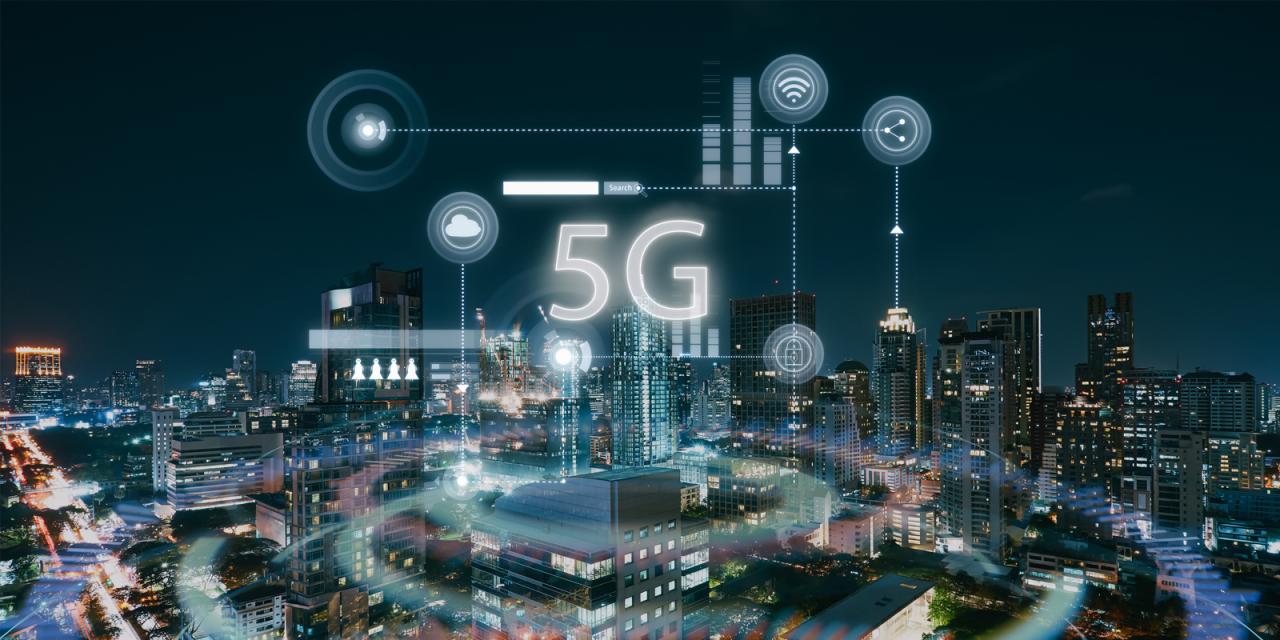
Source: healthcareitleaders.com
G’s transformative impact on healthcare is particularly evident in the realm of telemedicine. Its ultra-low latency and high bandwidth capabilities are revolutionizing how healthcare is delivered, extending access to specialists and improving the quality of care, especially in remote or underserved areas. This section will explore several key applications of 5G in telemedicine, comparing its performance to previous generations of mobile networks and outlining a hypothetical system for remote surgery.
5G’s high speed and low latency are revolutionizing healthcare, enabling remote surgery and faster data analysis. However, fully realizing the potential of AI in these applications requires powerful algorithms, and understanding the limitations is crucial. This is where exploring the limitations and challenges of current quantum AI algorithms, as discussed in this article Exploring the limitations and challenges of current quantum AI algorithms , becomes vital for future advancements in 5G-powered healthcare solutions.
Overcoming these hurdles will unlock even greater possibilities.
The enhanced capabilities of 5G are directly translating into improved patient outcomes and operational efficiencies within telemedicine. Faster data transfer speeds and reduced delays are enabling new possibilities in remote diagnosis, treatment, and monitoring.
Examples of Telemedicine Applications Enhanced by 5G
Several telemedicine applications are significantly improved by 5G’s speed and low latency. The following list highlights key examples where the difference is most noticeable.
- High-Definition Video Conferencing for Consultations: 5G enables real-time, high-definition video consultations between patients and specialists, allowing for more accurate diagnoses and personalized treatment plans. The improved visual clarity surpasses what’s possible with 4G, facilitating detailed examinations of skin conditions, wound healing, or even subtle facial expressions indicative of neurological issues.
- Remote Patient Monitoring (RPM) with Wearable Sensors: 5G’s high bandwidth allows for the seamless transmission of large amounts of data from wearable sensors monitoring vital signs (heart rate, blood pressure, oxygen saturation, etc.). This continuous monitoring allows for early detection of health deterioration and proactive intervention.
- Remote Diagnostics using AI-powered Imaging: 5G facilitates the rapid transmission of high-resolution medical images (X-rays, CT scans, ultrasounds) to specialists for analysis. Coupled with AI-powered diagnostic tools, this can lead to faster and more accurate diagnoses, particularly beneficial in emergency situations.
- Robotic Surgery Assistance: While still in its early stages, 5G’s low latency is crucial for enabling more precise control in robotic surgery. Surgeons can remotely operate on patients with minimal delays, improving surgical precision and reducing the risk of complications.
- Tele-rehabilitation: 5G enables real-time interaction between patients and physical therapists during rehabilitation sessions. This allows for personalized feedback and adjustments to exercises, leading to more effective rehabilitation outcomes.
Comparison of Remote Patient Monitoring using 4G vs. 5G
The difference between 4G and 5G in remote patient monitoring is substantial. 4G networks often struggle with the volume of data generated by multiple wearable sensors, leading to delays in data transmission and potential loss of critical information. 5G’s higher bandwidth and lower latency ensure reliable and near real-time data transmission, enabling continuous and uninterrupted monitoring.
For example, consider a patient with multiple chronic conditions requiring continuous monitoring of heart rate, blood pressure, and blood glucose levels. A 4G network might experience dropped connections or significant delays in data transmission, leading to missed alerts and potentially delayed interventions. A 5G network, however, can handle this data volume without interruption, providing a much more reliable and timely stream of information to healthcare providers.
| Feature | 4G | 5G |
|---|---|---|
| Data Transmission Speed | Relatively slow; prone to congestion | Significantly faster; less susceptible to congestion |
| Reliability | Can experience dropped connections and delays | More reliable; consistent connectivity |
| Latency | Higher latency, causing delays in data transmission | Ultra-low latency, enabling near real-time monitoring |
Hypothetical Telemedicine System for Remote Surgery using 5G
A 5G-enabled remote surgery system would require a sophisticated integration of hardware and software components. This system would need to ensure minimal latency and high bandwidth to support real-time control and high-resolution visual feedback.
The system would comprise:
- Surgical Robot at the Patient Site: A highly advanced robotic surgical system with high-resolution cameras and precise manipulators.
- High-Definition 3D Imaging System: Providing the surgeon with a detailed, real-time view of the surgical field.
- Haptic Feedback System: Allowing the surgeon to feel the texture and resistance of tissues during the procedure.
- 5G Network Infrastructure: Providing a secure and reliable high-bandwidth, low-latency connection between the surgical robot and the surgeon’s console.
- Surgeon’s Console: Equipped with high-resolution displays, intuitive controls, and haptic feedback devices.
- Data Security and Encryption System: Ensuring the confidentiality and integrity of patient data transmitted over the 5G network.
- Remote Monitoring and Assistance System: Allowing other specialists to observe the surgery and provide remote assistance.
5G’s Impact on Medical Imaging and Diagnostics
The lightning-fast speeds and low latency of 5G networks are revolutionizing the field of medical imaging and diagnostics. This transformative technology is enabling faster transmission of high-resolution images, facilitating remote consultations with specialists, and empowering the use of AI-powered diagnostic tools, ultimately leading to improved patient care and more efficient healthcare workflows.G’s ability to handle massive amounts of data with minimal delay is particularly crucial in medical imaging.
5G’s impact on healthcare is huge, enabling faster data transfer for remote diagnostics and telehealth. This speed is crucial, and its benefits extend beyond healthcare; consider how advancements in computing power, like those discussed in this article on How quantum AI will revolutionize financial modeling and prediction , could further improve data analysis in medical fields. Ultimately, faster data processing, whether in finance or healthcare, leads to better outcomes and more efficient systems.
Traditional networks often struggle with the large file sizes associated with high-resolution images like CT scans and MRIs, leading to significant delays in diagnosis. 5G eliminates this bottleneck, allowing for near-instantaneous transfer of images between hospitals, clinics, and specialists regardless of geographical location.
Rapid Transmission of High-Resolution Medical Images
The speed and capacity of 5G networks significantly reduce the time it takes to transmit large medical images. For example, a high-resolution CT scan, which might take several minutes to transfer over a 4G network, can be transmitted almost instantly using 5G. This speed improvement is vital in emergency situations, where timely diagnosis is critical for patient survival. Imagine a rural hospital needing to consult a specialist in a major city about a complex case – 5G ensures the specialist receives the necessary images quickly enough to provide immediate guidance.
This rapid access to images also improves workflow efficiency within a hospital, reducing delays in diagnosis and treatment.
Real-Time Remote Diagnostics Enabled by 5G
G facilitates real-time remote diagnostics, allowing specialists to analyze images and provide immediate feedback, regardless of their physical location. This is particularly beneficial in areas with limited access to specialists, such as rural communities or developing countries. For instance, a radiologist in a major city could remotely analyze an X-ray taken in a small clinic, providing a diagnosis and treatment recommendations in real-time.
However, challenges remain, including ensuring reliable network connectivity in all areas and addressing data security and privacy concerns. Despite these challenges, the potential benefits of real-time remote diagnostics are substantial.
AI-Powered Medical Imaging Analysis Enhanced by 5G
G’s high bandwidth and low latency are key enablers for the effective use of AI-powered tools in medical imaging analysis. These tools can analyze images much faster and more accurately than humans, identifying subtle anomalies that might be missed by the human eye. For example, AI algorithms can be used to detect early signs of cancer in mammograms or to identify critical details in CT scans that might indicate a stroke.
5G enables these AI algorithms to access and process images quickly, providing faster and more accurate diagnoses. The combination of 5G and AI has the potential to significantly improve the efficiency and accuracy of medical imaging analysis, leading to better patient outcomes. A study by the University of California, San Francisco, for example, demonstrated that AI-assisted image analysis using 5G significantly reduced the time required for diagnosis of certain types of cancers.
5G and the Internet of Medical Things (IoMT)
The convergence of 5G’s high-speed, low-latency capabilities with the Internet of Medical Things (IoMT) promises a revolution in healthcare delivery. IoMT, encompassing a vast network of interconnected medical devices, from wearable sensors to implantable monitors, generates a massive amount of data. 5G’s enhanced bandwidth and reduced latency are crucial for effectively transmitting and processing this data, leading to improved patient care and more efficient healthcare systems.Integrating 5G with IoMT devices offers significant advantages in various aspects of patient care.
The improved connectivity allows for real-time monitoring of vital signs, remote diagnostics, and proactive interventions, ultimately leading to better health outcomes and reduced healthcare costs.
5G’s high speed and low latency are revolutionizing healthcare, enabling remote surgery and faster data analysis for improved diagnostics. Understanding the computational power needed for these advancements requires looking at the differences in processing capabilities; check out this article on Comparing classical AI and quantum AI performance in specific tasks to see how AI algorithms will be impacted.
Ultimately, this comparison helps us predict the future of AI-powered healthcare solutions in the 5G era.
Benefits of 5G Integration with IoMT Devices in Patient Care
The integration of 5G with IoMT devices offers several key benefits, significantly enhancing patient care and operational efficiency. The speed and reliability of 5G are essential for handling the substantial data streams generated by these devices.
- Real-time Monitoring and Alerting: 5G’s low latency allows for the immediate transmission of vital signs data from wearable sensors and implanted devices. This enables healthcare providers to monitor patients remotely and receive immediate alerts in case of critical changes, facilitating timely interventions and potentially preventing life-threatening situations. For example, a patient with a heart condition wearing a 5G-connected ECG patch can have their data transmitted instantly to their cardiologist, allowing for prompt action if an irregular heartbeat is detected.
- Improved Remote Patient Monitoring (RPM): 5G empowers effective remote patient monitoring programs, allowing for continuous observation of patients with chronic conditions. This reduces the need for frequent hospital visits, improving patient convenience and reducing healthcare costs. For instance, a patient with diabetes can have their blood glucose levels monitored remotely, enabling proactive adjustments to their treatment plan.
- Enhanced Telemedicine Capabilities: 5G’s high bandwidth enables high-quality video conferencing and data transfer, enhancing the effectiveness of telemedicine consultations. This is particularly beneficial for patients in remote areas or with limited mobility, providing access to specialist care that may otherwise be unavailable.
- Data-Driven Decision Making: The vast amount of data collected by IoMT devices can be analyzed using advanced analytics and artificial intelligence (AI) to improve diagnostic accuracy, personalize treatment plans, and predict potential health risks. This data-driven approach leads to more effective and efficient healthcare delivery.
Security Risks Associated with 5G-Enabled IoMT Devices
Connecting a large number of IoMT devices to a 5G network introduces significant security challenges. The potential for data breaches, unauthorized access, and cyberattacks necessitates robust security measures to protect patient privacy and data integrity.
- Data Breaches: The massive amount of sensitive patient data transmitted across the 5G network makes it a prime target for cyberattacks. Breaches could expose personal health information, leading to identity theft, financial loss, and reputational damage for healthcare providers.
- Unauthorized Access: Lack of proper authentication and authorization mechanisms can allow unauthorized individuals to access and manipulate IoMT devices, potentially compromising patient safety and data integrity. Malicious actors could alter device settings, tamper with data, or even disable critical medical equipment.
- Device Vulnerabilities: IoMT devices, like any other connected device, are susceptible to software vulnerabilities. Exploiting these vulnerabilities could allow attackers to gain control of devices and compromise patient data or disrupt healthcare operations. Regular software updates and robust security protocols are essential to mitigate these risks.
- Network Security: Securing the 5G network itself is crucial to prevent unauthorized access and data breaches. Robust network security measures, including encryption, firewalls, and intrusion detection systems, are essential to protect the flow of patient data.
Hypothetical Scenario: 5G-Enabled IoMT and Chronic Disease Management
Consider a patient with congestive heart failure (CHF) managed using 5G-enabled IoMT devices.
- The patient wears a smart watch that continuously monitors heart rate, blood pressure, and oxygen saturation levels.
- An implantable cardiac monitor transmits real-time data on heart rhythm and activity.
- 5G enables the immediate transmission of this data to the patient’s cardiologist.
- The cardiologist receives alerts if any vital signs deviate from established baselines.
- AI-powered analytics analyze the data, providing insights into the patient’s condition and predicting potential exacerbations.
- The cardiologist can remotely adjust the patient’s medication or schedule a telehealth consultation based on the data.
- This proactive approach helps prevent hospitalizations, improves the patient’s quality of life, and reduces healthcare costs.
Ethical and Societal Considerations of 5G in Healthcare
The integration of 5G technology into healthcare presents significant opportunities for improved patient care, but it also raises crucial ethical and societal concerns that require careful consideration. The vast amounts of sensitive patient data generated and transmitted through 5G-enabled devices and applications necessitate robust safeguards to protect privacy and security. Furthermore, the potential for unequal access to these advanced technologies and the risk of algorithmic bias demand proactive measures to ensure equitable and just healthcare outcomes for all.
Patient Privacy and Data Security in 5G Healthcare
The enhanced connectivity and data transmission capabilities of 5G networks dramatically increase the volume and sensitivity of patient data collected and analyzed. This creates a heightened risk of data breaches and unauthorized access, potentially leading to identity theft, financial loss, and reputational damage for patients. Stronger data encryption protocols, robust access control mechanisms, and rigorous data governance frameworks are essential to mitigate these risks.
For example, the implementation of blockchain technology could enhance data security and transparency by creating an immutable record of data access and modifications. Furthermore, the development of clear and concise data privacy policies, coupled with transparent communication with patients regarding data usage, is crucial to building trust and fostering responsible data management practices.
Impact of 5G on Healthcare Equity and Access
The deployment of 5G infrastructure and the adoption of 5G-enabled healthcare applications may not be uniform across all communities. This could exacerbate existing health disparities, particularly in underserved or rural areas with limited access to reliable broadband internet. Digital literacy also plays a crucial role; individuals unfamiliar with technology may struggle to benefit from 5G-enabled services. Strategies to bridge this digital divide include targeted investments in infrastructure development in underserved areas, providing digital literacy training programs, and developing user-friendly interfaces for 5G-enabled healthcare applications.
For instance, initiatives focused on expanding telehealth access in rural communities through 5G-powered remote monitoring systems can help overcome geographical barriers to care.
5G’s high speed and low latency are revolutionizing healthcare, enabling remote surgery and faster data analysis. This improved connectivity is crucial, especially when considering the wider impact of technology; understanding climate change requires powerful computing, and that’s where advancements like those described in this article on Quantum AI’s potential to solve complex climate change modeling problems become incredibly relevant.
Ultimately, both 5G and Quantum AI represent leaps forward in tackling major global challenges.
Addressing Bias in AI Algorithms for 5G Healthcare
Artificial intelligence (AI) algorithms are increasingly used in 5G-enabled healthcare applications for tasks such as diagnosis, treatment planning, and risk prediction. However, if the data used to train these algorithms is biased, the resulting AI systems may perpetuate and even amplify existing health inequalities. For example, an algorithm trained primarily on data from one demographic group may perform poorly when applied to individuals from other groups.
Addressing this requires careful attention to data collection methodologies, ensuring diverse and representative datasets are used for algorithm training. Furthermore, ongoing monitoring and evaluation of AI systems for potential bias, coupled with mechanisms for feedback and adjustment, are essential to ensure fairness and accuracy in their application. Transparency in the development and deployment of AI algorithms is also vital to building public trust and fostering accountability.
Future Trends and Developments in 5G Healthcare
The rapid advancements in 5G technology are paving the way for transformative changes in healthcare delivery. Beyond the currently implemented applications, the potential for innovation remains vast, driven by the increasing need for remote patient monitoring, improved diagnostics, and more efficient healthcare resource allocation. This section explores future trends and the expected impact of evolving technologies like 6G.
Potential Future Applications of 5G in Healthcare
The unique capabilities of 5G, such as low latency and high bandwidth, are fueling the development of several exciting applications still in their nascent stages. These applications promise to redefine healthcare as we know it.
- Advanced Robotic Surgery: 5G’s low latency allows for more precise and responsive control of surgical robots, potentially enabling remote surgeries with minimal delays. This could significantly improve access to specialized surgical expertise in underserved areas.
- Immersive Telemedicine: Beyond video calls, 5G facilitates the use of augmented and virtual reality (AR/VR) in telemedicine, allowing doctors to remotely examine patients with greater detail and accuracy. This could include virtual consultations with 3D models of organs, for instance.
- AI-Powered Diagnostics: 5G’s high bandwidth enables the rapid transmission of large medical image datasets to powerful AI systems for faster and more accurate diagnosis. This could significantly reduce diagnostic delays and improve patient outcomes.
- Personalized Medicine: By enabling real-time data collection and analysis from wearable sensors and IoMT devices, 5G facilitates the development of personalized treatment plans tailored to individual patient needs and responses.
Comparison of 5G and 6G Impact on Healthcare
While 5G is already revolutionizing healthcare, the anticipated arrival of 6G promises even more significant advancements. The table below highlights key differences:
| Feature | 5G | 6G |
|---|---|---|
| Data Speed | Gigabit speeds, enabling rapid data transfer for medical imaging and remote diagnostics. | Terabit speeds, facilitating near-instantaneous data transmission for real-time monitoring and complex AI applications. |
| Latency | Low latency, enabling real-time applications like remote surgery and telehealth. | Ultra-low latency, minimizing delays to an almost imperceptible level, crucial for critical applications like brain-computer interfaces. |
| Connectivity | Supports massive IoT connections, enabling widespread use of medical devices. | Supports even denser and more reliable IoT connections, paving the way for seamless integration of a vast array of sensors and devices. This could include implantable sensors and pervasive monitoring systems. |
| Security | Robust security measures are implemented, but vulnerabilities remain a concern. | Enhanced security features are expected, addressing vulnerabilities and ensuring patient data privacy and integrity. This might involve advanced encryption and AI-driven threat detection. |
Challenges and Opportunities in Widespread 5G Adoption in Healthcare, 5G in healthcare
Despite its immense potential, the widespread adoption of 5G in healthcare faces several challenges. However, these challenges also present significant opportunities for innovation and growth.The primary challenges include the high initial investment costs for infrastructure upgrades, ensuring data security and privacy in a connected environment, and the need for regulatory frameworks to govern the use of 5G technologies in healthcare.
Furthermore, overcoming potential digital divides and ensuring equitable access to 5G-enabled healthcare services are crucial considerations.Conversely, the opportunities lie in improving healthcare accessibility, especially in remote and underserved areas. 5G can also streamline operational efficiency, reduce healthcare costs, and enhance the quality of care through improved diagnostics and personalized medicine. The development of new healthcare services and business models powered by 5G also presents lucrative opportunities for entrepreneurs and investors.
For example, a rural hospital system could leverage 5G to connect with specialists in distant cities, providing advanced care to patients without the need for expensive relocation or travel.
Conclusive Thoughts
The potential of 5G in healthcare is undeniable. From streamlining complex medical procedures to democratizing access to quality care, the technology offers transformative possibilities. While challenges related to security, infrastructure deployment, and ethical considerations remain, the ongoing advancements and collaborations across the healthcare and technology sectors are paving the way for a future where 5G plays a central role in improving global health outcomes.
The journey toward a fully integrated 5G healthcare system is underway, promising a future of improved patient care and medical innovation.
FAQ Section: 5G In Healthcare
What are the potential downsides of using 5G in healthcare?
Increased reliance on technology introduces vulnerabilities like cyberattacks and data breaches. Ensuring robust security protocols is paramount. Additionally, the cost of implementation and maintenance can be significant, potentially creating disparities in access based on location and resources.
How does 5G compare to previous generations of cellular technology in the context of healthcare?
5G significantly surpasses 4G and earlier generations in speed and latency. This translates to faster transmission of large medical files, enabling real-time applications like remote surgery and improved remote patient monitoring accuracy. The reduced latency minimizes delays crucial for time-sensitive medical procedures.
Will 5G replace in-person healthcare visits entirely?
No, 5G is designed to enhance, not replace, in-person care. It provides tools for remote monitoring, consultations, and diagnostics, making healthcare more accessible and efficient. However, many aspects of healthcare still require the human touch and physical examination.
What regulations are in place to protect patient data transmitted over 5G networks?
Stringent data privacy regulations like HIPAA (in the US) and GDPR (in Europe) govern the handling and transmission of patient data. Healthcare providers must adhere to these regulations and implement robust security measures to protect sensitive information.
